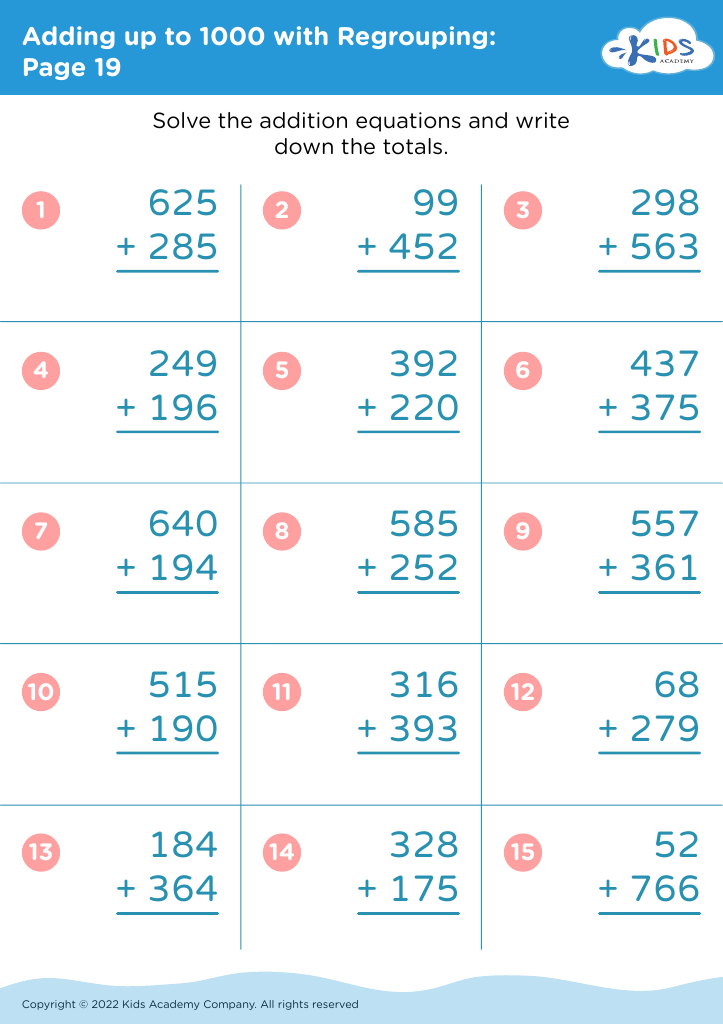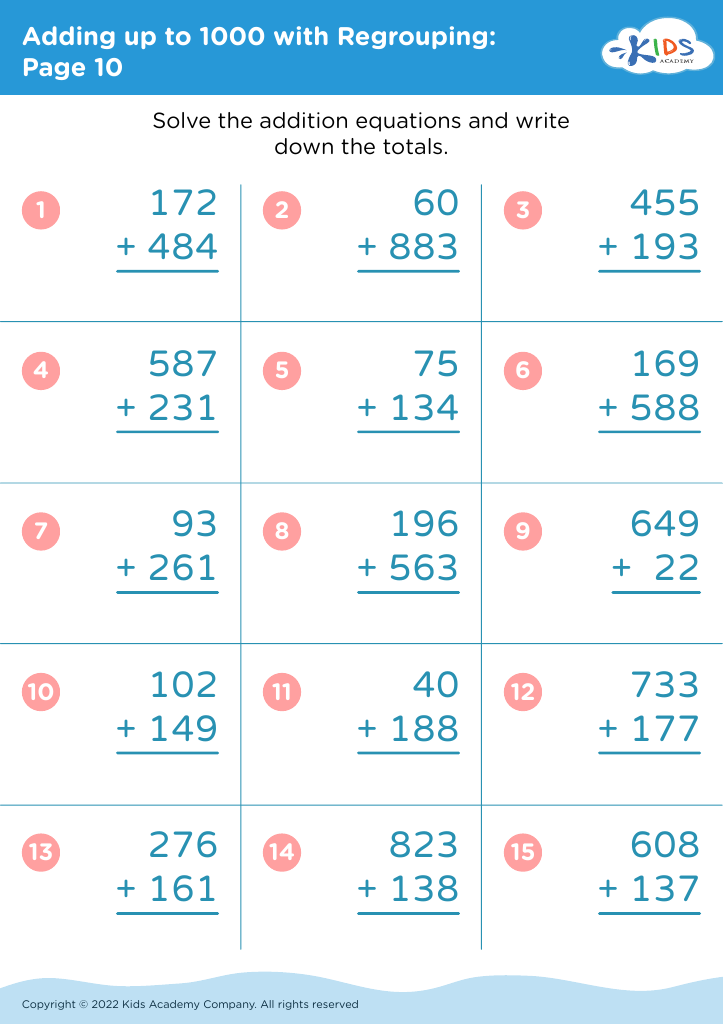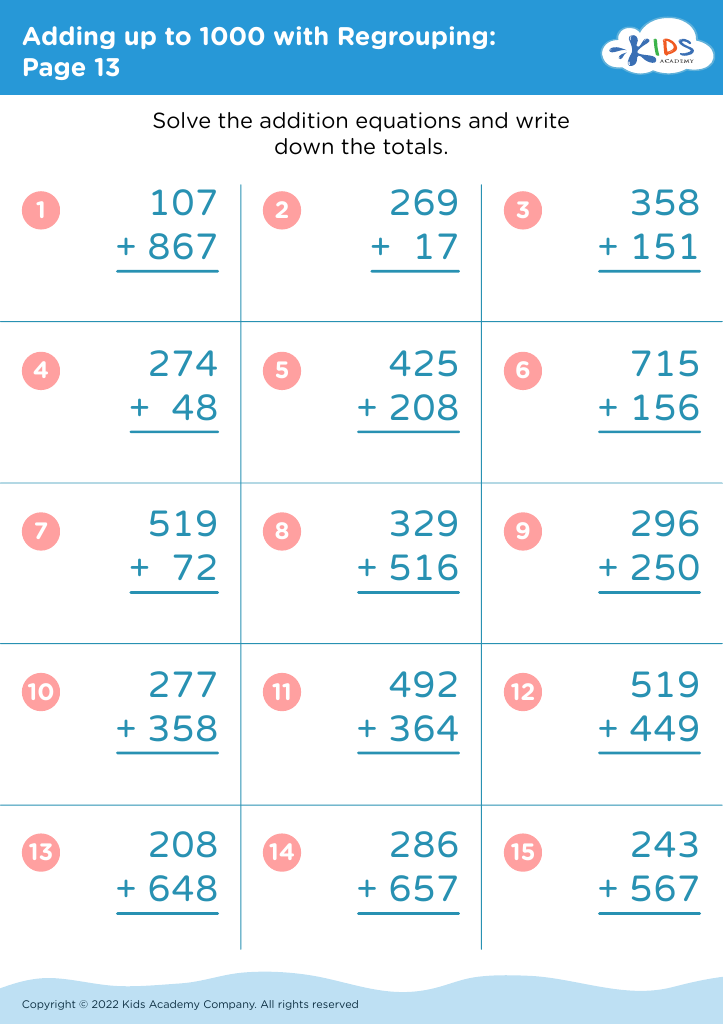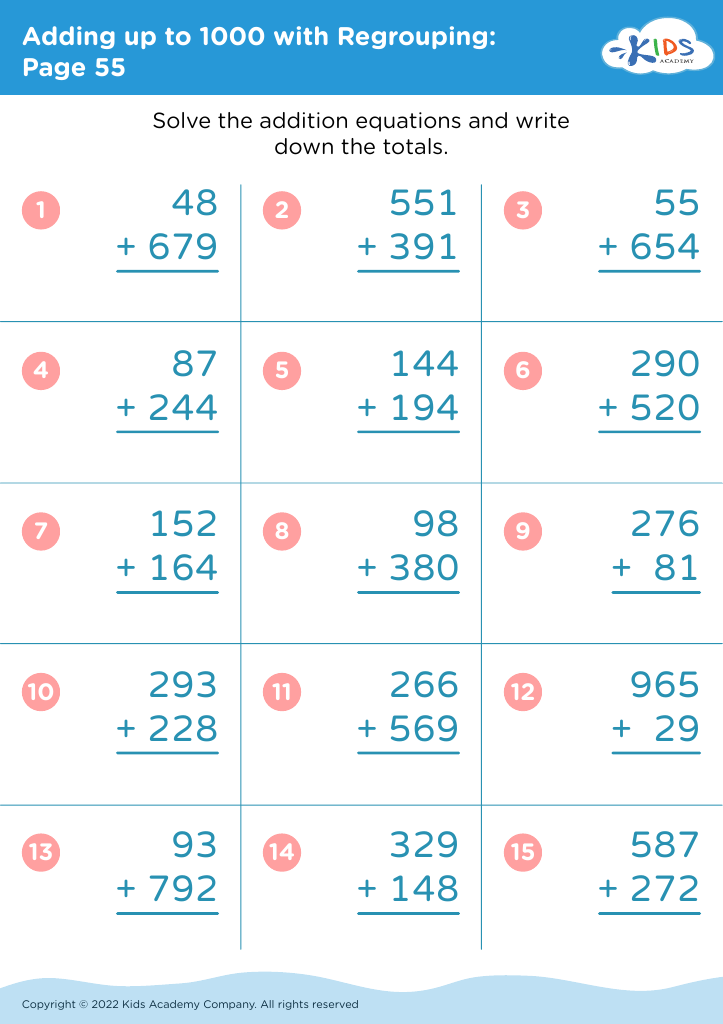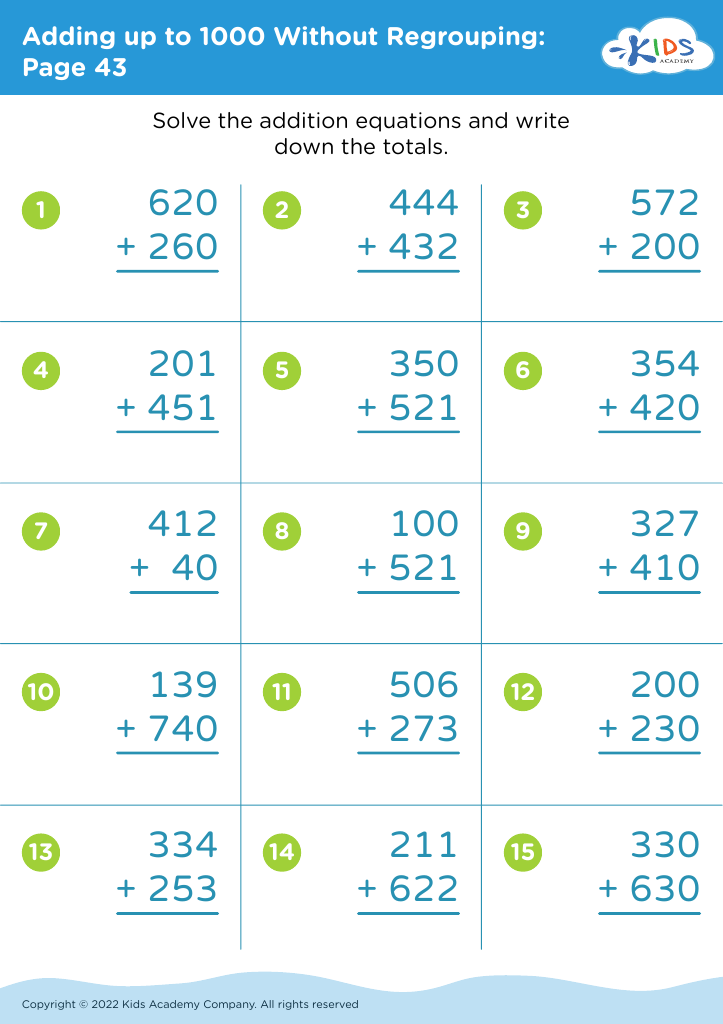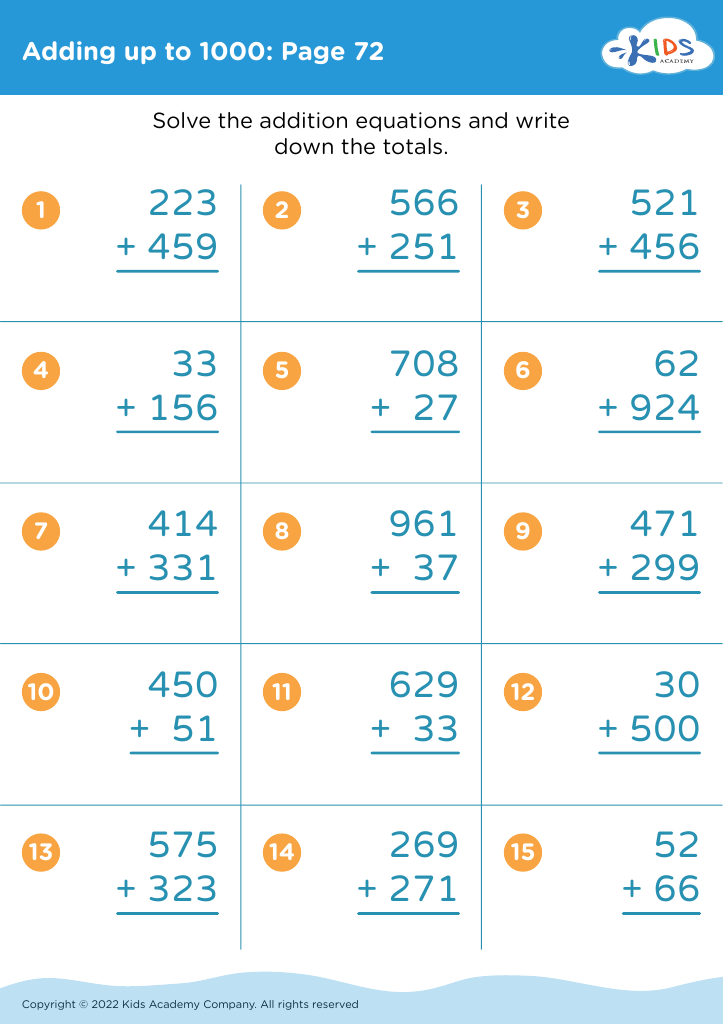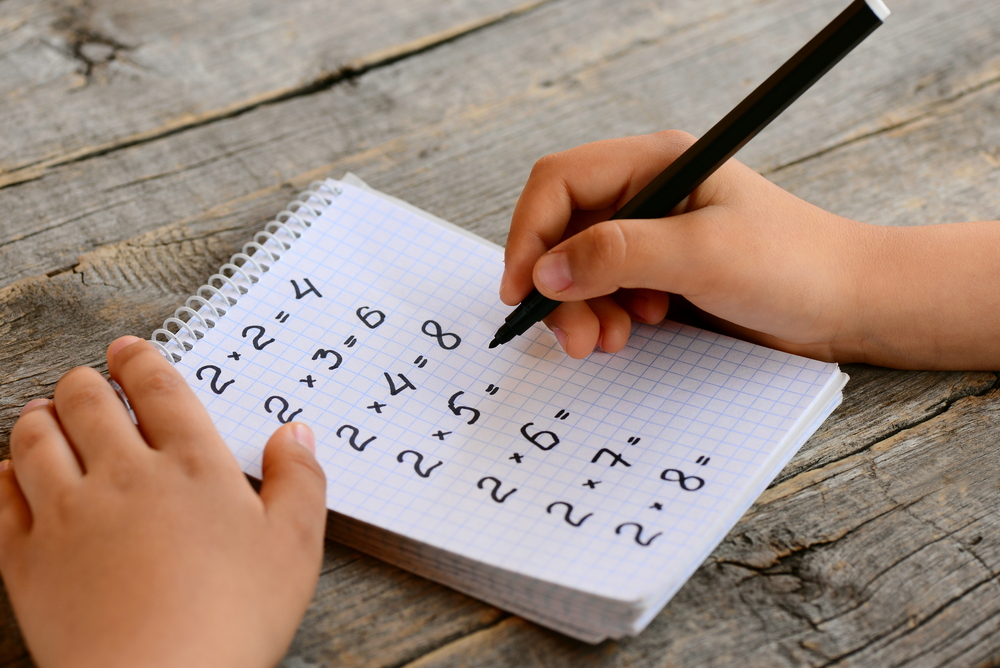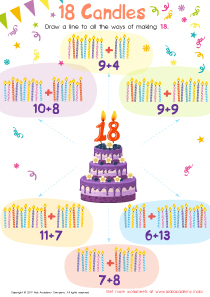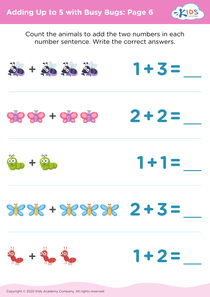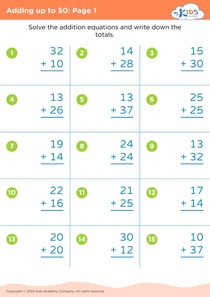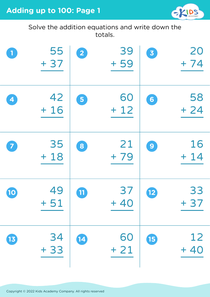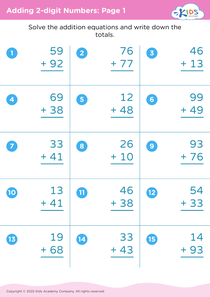Recognizing Patterns Adding up to 1000 Worksheets for Ages 5-8
6 filtered results
-
From - To
Boost your child's mathematical skills with our "Recognizing Patterns Adding up to 1000 Worksheets" designed for ages 5-8. These engaging and educational worksheets promote critical thinking and problem-solving by focusing on patterns and sequences. As children work through the activities, they will enhance their addition skills and understand patterns within numbers up to 1000. Perfect for young learners, these worksheets provide step-by-step guidance to build a solid foundation in math. Foster a love for learning and confidence in mathematics with our expertly crafted worksheets, aligning with educational standards for continued excellence in early childhood education.
Recognizing patterns and understanding numbers up to 1000 is crucial for young children, particularly those aged 5-8, as it lays a strong math foundation. Early exposure to number patterns fosters logical thinking and problem-solving skills which are essential for advanced mathematical concepts.
Teaching patterns, such as sequences or visual patterns, helps children see relationships between numbers and builds their ability to predict future numbers in a sequence. This naturally progresses to an understanding of addition and subtraction, and a better grasp of higher arithmetic principles. When children practice adding numbers up to 1000, they enhance their number sense, gain confidence in handling larger numbers, and solidify their comprehension of place value and the base-ten system.
Additionally, engaging with numbers through games and hands-on activities makes learning fun and interactive, boosting children's enthusiasm for math. Having a strong math foundation early on can foster a positive attitude towards mathematics, reducing anxiety that often accompanies complex math problems in later stages.
Overall, recognizing patterns and adding up to 1000 helps boost children's cognitive abilities, equipping them with essential skills required for their educational journey and everyday life problem-solving situations. This sets the stage for successful academic achievement and a lifelong appreciation for mathematics.
